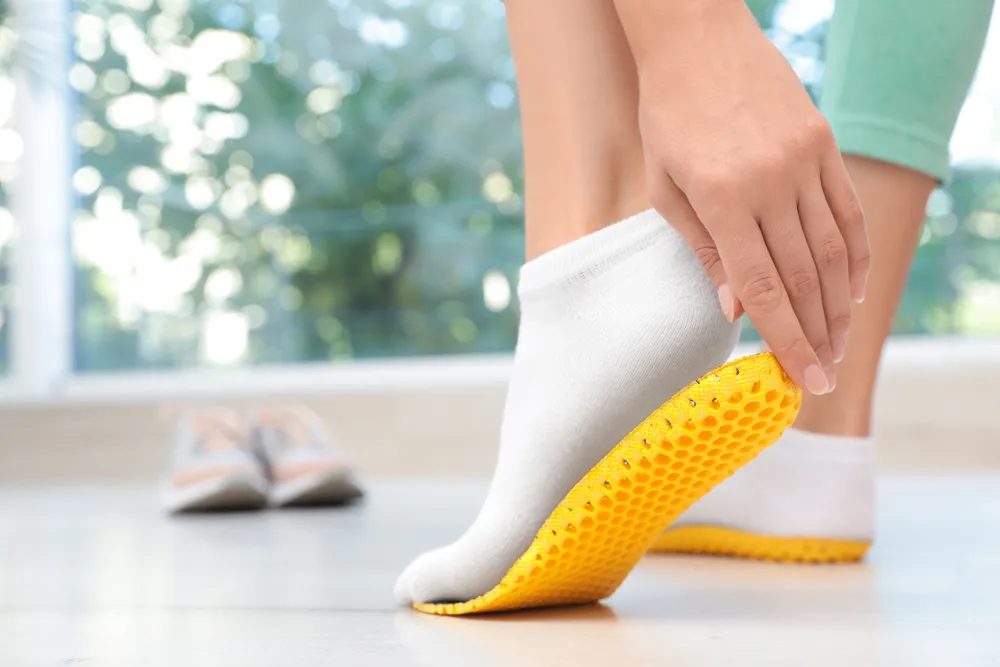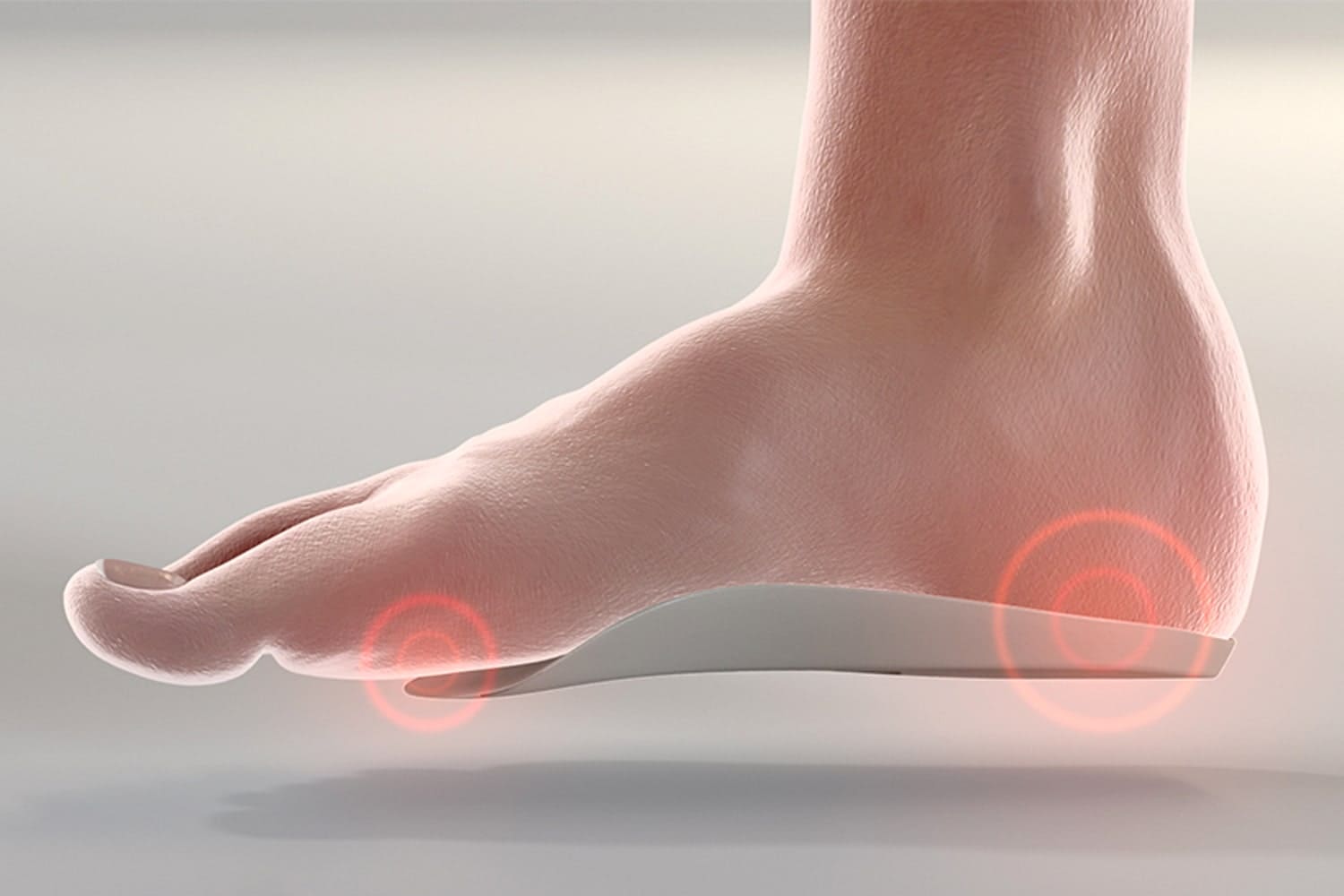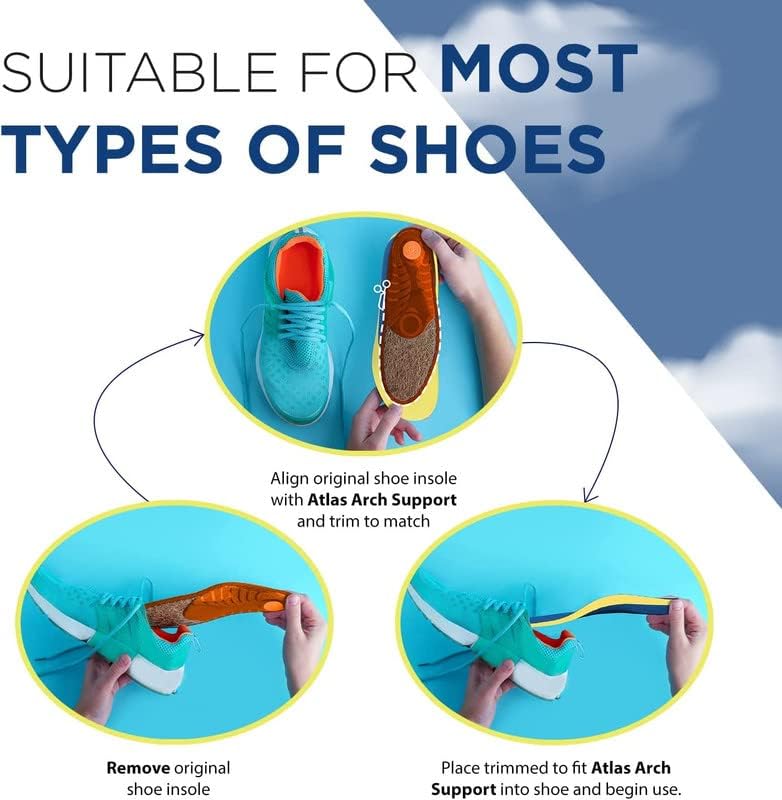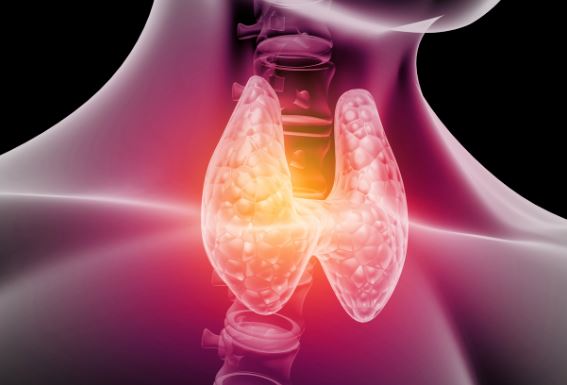Discover essential tips and strategies in “Maintaining Healthy Arches: A Guide to Arch Support” to ensure optimal foot health and comfort. Learn how to select the right footwear, incorporate exercises, and when to seek professional advice.
Introduction to Arch Support
Maintaining healthy arches is pivotal for overall foot health and can significantly impact your daily comfort and mobility. The arches of your feet are key structures that absorb shock, distribute weight evenly, and provide support as you move. In this guide, we will explore the importance of arch support, the anatomy of the foot, and practical steps to maintain healthy arches, including the selection of proper footwear and lifestyle adjustments.
Table of Contents
The Anatomy of the Foot
Bones and Joints
The foot is divided into three main parts: the forefoot, midfoot, and hindfoot.
- Forefoot: This area contains the five toes (phalanges) and the five longer bones (metatarsals). The big toe has two phalanges (distal and proximal), while the other toes have three. The metatarsals connect the phalanges to the midfoot and play a key role in balance and propulsion during walking or running.
- Midfoot: A pyramid-like collection of bones forms the arches of the foot. These include the three cuneiform bones, the cuboid bone, and the navicular bone. The midfoot is critical for absorbing and distributing the forces exerted on the foot.
- Hindfoot: This part consists of the heel (calcaneus) and the ankle (talus). The calcaneus is the largest bone in the foot, and it supports the talus, which forms the lower part of the ankle joint. The hindfoot connects the foot to the two bones of the lower leg, the tibia and fibula.
Muscles, Tendons, and Ligaments
The muscles of the foot, along with their tendons, provide movement and support. The Achilles tendon, the largest tendon in the foot, connects the calf muscles to the heel and is essential for walking, running, and jumping. Ligaments, on the other hand, support the joints of the foot and maintain its arches.
Arches of the Foot
The foot has three main arches: the medial longitudinal arch, the lateral longitudinal arch, and the transverse arch. These arches are formed by the interplay of bones, ligaments, and tendons, and they serve to distribute body weight across the feet, provide shock absorption, and adapt to different surfaces.
- Medial Longitudinal Arch: The most prominent arch, running from the heel to the forefoot along the inside of the foot. It is primarily supported by the posterior tibial tendon.
- Lateral Longitudinal Arch: A less pronounced arch that runs along the outer edge of the foot.
- Transverse Arch: This arch runs across the midfoot, from the outside to the inside of the foot.
Function and Movement
The foot’s anatomy allows for a wide range of movements, including flexion, extension, inversion, and eversion. These movements are essential for activities such as walking, where the foot undergoes a complex sequence of motions known as the gait cycle. The gait cycle includes phases like heel strike, midstance, and toe-off, each requiring different parts of the foot to engage in precise ways.
Signs of Poor Arch Support
Many people experience foot discomfort or pain without realizing it could be attributed to inadequate arch support. Recognizing the symptoms and understanding the consequences of neglected arch care are essential for timely interventions. This section will guide you through identifying the need for enhanced arch support.

Maintaining Healthy Arches: A Guide to Arch Support
Understanding Arch Support
Arch support refers to the structural assistance provided to the arches of your feet, either through the natural shape of your feet, footwear, or additional orthotic devices. Proper support helps distribute pressure evenly across your feet, reducing strain on the arches.
Signs You Need Better Arch Support
Common indicators that you might need improved arch support include:
- Foot pain, particularly in the heel or arch
- Flat feet or overly high arches
- Frequent ankle sprains
- Pain in the knees, hips, or lower back
- Shoes wear out more on one side than the other

Daily Practices for Arch Health
- Stretching Exercises: Regular stretching of the Achilles tendon and calf muscles can prevent tightness and promote flexibility, benefiting your arches.
- Strengthening Exercises: Strengthening the muscles around your arches can improve foot stability. Simple exercises include towel curls and toe taps.
- Proper Footwear: Wear shoes that provide adequate support, especially if you have flat feet or high arches. Avoid high heels and shoes with little to no support.
- Use Orthotics: For those with specific arch-related issues, custom orthotics prescribed by a podiatrist can offer the necessary support and correct abnormal foot mechanics.
Choosing the Right Footwear
Selecting the right shoes is paramount for arch support. Look for footwear that:
- Has a firm heel counter for stability
- Includes adequate arch support that matches the contour of your foot
- Features a flexible sole at the toe to allow for proper toe-off during walking
- Provides enough cushioning to absorb shock but is not too soft
Choosing the Right Footwear for Arch Support
Understand Your Foot Type
Before shopping for shoes, it’s important to understand your foot type, especially the arch. There are generally three foot arch types:
- Flat Feet (Low Arches): Tend to overpronate, which means the feet roll inward excessively when walking. Shoes with stability or motion control features can help manage overpronation.
- Normal Arches: Offer natural stability and flexibility. People with normal arches can usually wear a wide variety of shoes but may benefit from shoes with moderate arch support.
- High Arches: Tend to underpronate or supinate, leading to insufficient impact absorption. Shoes with cushioning and flexibility help to counteract this.

Key Features to Look for
When selecting footwear for arch support, consider the following features:
- Arch Support: The insole should have a defined arch that matches the shape of your foot. This support helps distribute pressure evenly across the foot.
- Firm Heel Counter: A sturdy heel counter (the back part of the shoe that wraps around your heel) provides stability and helps control overpronation or supination.
- Appropriate Fit: Shoes should fit well from the start without a ‘break-in’ period. There should be enough room in the toe box, and the shoe should snugly fit around the midfoot and heel.
- Cushioning: Look for shoes with adequate cushioning to absorb shock, especially if you have high arches. However, too much cushioning can reduce stability for those with flat feet.
- Flexibility: The shoe should bend at the toe area to support the foot’s natural walking motion, but it shouldn’t be too easy to twist the shoe, as this indicates a lack of support.
Specific Types of Shoes
- Running Shoes: Often designed with specific features to accommodate different arch types, running shoes are a good option for daily wear, even for non-runners, due to their support and cushioning.
- Walking Shoes: These are designed for the specific biomechanics of walking and can provide the necessary arch support for daily activities.
- Orthopedic Shoes: Designed with foot health in mind, orthopedic shoes can be an excellent choice for individuals with specific foot conditions or those needing extra support.
- Custom Orthotics: For those who cannot find the right level of support from over-the-counter shoes, custom orthotics made by a podiatrist can be inserted into more neutral shoes to provide personalized support.
Custom Orthotics vs. Over-the-Counter Insoles
Custom Orthotics
Custom orthotics are specially-made devices designed to support and comfort your feet. They are prescribed by a podiatrist or other foot health professional after a thorough examination of your feet, ankles, and legs, and considering your gait and daily activities. Here are some key aspects of custom orthotics:
- Personalized Fit: They are tailored to the specific contours of your feet and designed to address your unique foot structure, providing targeted support where it’s needed most.
- Medical Conditions: Custom orthotics are often used to treat specific foot, ankle, and lower limb problems, including plantar fasciitis, bursitis, diabetes-related foot issues, and more.
- Material and Durability: They are made from high-quality materials suited to your foot condition and activity level, making them more durable than OTC insoles.
- Cost: The major drawback of custom orthotics is their cost, which can be significantly higher than OTC options. However, their durability and personalized fit can offer better long-term value for some users.
Over-the-Counter (OTC) Insoles
OTC insoles are mass-produced inserts available at pharmacies, sporting goods stores, and online. They come in various sizes, shapes, and materials, designed to fit a wide range of foot types and shoe styles. Here are some aspects of OTC insoles:
- General Support and Comfort: OTC insoles can provide additional cushioning and support, making them suitable for people with mild foot discomfort or those seeking enhanced shoe comfort.
- Variety: There is a wide range of OTC insoles available, including options designed for specific activities (like running or hiking), arch types, and cushioning preferences.
- Affordability: OTC insoles are much less expensive than custom orthotics, making them a more accessible option for immediate relief or those on a tight budget.
- Trial and Error: Finding the right OTC insole may require some experimentation, as they are not customized to individual foot conditions.

Lifestyle Adjustments for Better Arch Health
Maintain a Healthy Weight
Excess body weight can place additional stress on your feet, particularly on the arches, leading to pain and discomfort. Maintaining a healthy weight reduces the strain on your feet and can help prevent the flattening of the arches over time.
Regular Foot Exercises
Specific exercises can strengthen the muscles around your arches, improving their stability and function. Consider incorporating the following exercises into your routine:
- Towel Scrunches: Place a towel on the floor and use your toes to scrunch it towards you, which can help strengthen the arch muscles.
- Heel Raises: Standing with your feet hip-width apart, slowly raise your heels off the ground and then lower them, which strengthens the calf muscles and supports the arches.
- Toe Yoga: Try lifting just your big toe while keeping the others on the ground, and then reverse the motion. This exercise improves control and strength in the foot muscles.
Stretch Regularly
Tight muscles in your legs and feet can contribute to foot pain and impact your arches. Regular stretching of the Achilles tendon, calves, and the plantar fascia (the ligament that runs along the bottom of your foot) can alleviate tension and support arch health.
Choose Footwear Wisely
Wearing shoes that provide adequate arch support and cushioning is essential. Avoid high heels and shoes with flat soles that offer little to no support. When selecting athletic shoes, choose options designed for your specific foot type and the activities you engage in.
Limit High-Impact Activities
High-impact activities, like running on hard surfaces, can increase the strain on your arches. Incorporating low-impact exercises such as swimming, cycling, or yoga can help maintain fitness levels while reducing the stress on your feet.
Stay Hydrated
Proper hydration is essential for maintaining the health of the connective tissues in your body, including those in your feet. Dehydration can lead to tissue stiffness, impacting foot function and arch health.
Use Proper Foot Hygiene
Keeping your feet clean and dry can prevent conditions that might affect your foot structure, such as fungal infections. Regularly inspect your feet for any signs of issues that could impact your arches, such as calluses, blisters, or changes in foot shape.
Regular Podiatrist Visits
Regular check-ups with a podiatrist can help identify and address any potential issues with your arches before they become serious problems. They can also provide personalized advice on footwear and exercises tailored to your specific needs.
Professional Care for Arch Support
When to Seek Professional Care
It’s advisable to consult a healthcare professional if you experience:
- Persistent foot pain or discomfort, especially in the arch, heel, or ball of the foot
- Visible changes in the structure of your feet, such as flat feet or excessively high arches
- Difficulty in walking, standing, or performing daily activities due to foot pain
- Signs of overpronation (excessive inward rolling of the foot) or supination (excessive outward rolling)
- Injuries that may have affected your foot arches, such as sprains or fractures
Types of Professionals to Consult
- Podiatrists: Specialists in foot and ankle care who can diagnose foot problems, prescribe orthotics, and provide treatment plans.
- Orthopedic Surgeons: Doctors who specialize in the musculoskeletal system, including foot and ankle issues, and can provide both surgical and non-surgical treatments.
- Physical Therapists: Professionals who can help with rehabilitation and suggest exercises to strengthen the foot and improve arch support.
WHERE TO BUY
FAQs About Arch Support
- How do I know if I need more arch support?
- Can exercises really improve arch health?
- What are the best types of shoes for arch support?
- How often should I replace my footwear to maintain arch health?
- Are custom orthotics worth the investment?
- Can poor arch support affect other parts of my body?
Conclusion
Maintaining healthy arches is essential for foot health and overall well-being. By understanding the importance of arch support, choosing the right footwear, and making appropriate lifestyle adjustments, you can ensure your feet stay healthy and comfortable. Remember, proactive care and attention to your arches can prevent many common foot problems and contribute to a more active and pain-free life.









